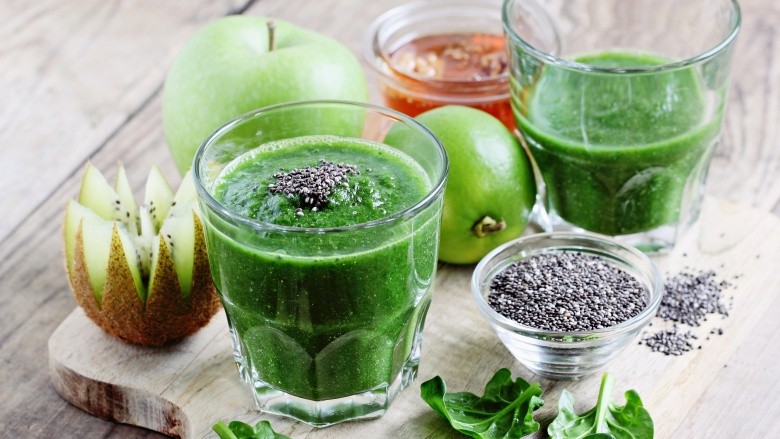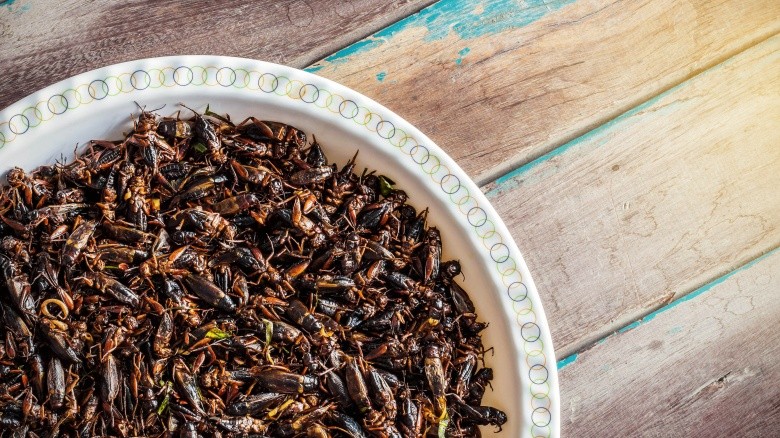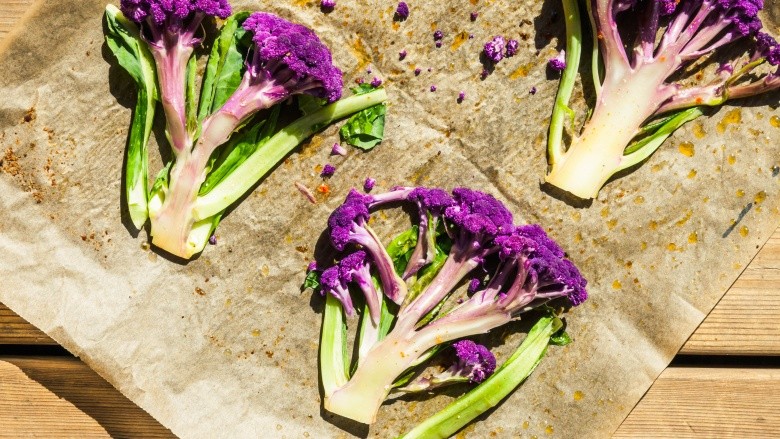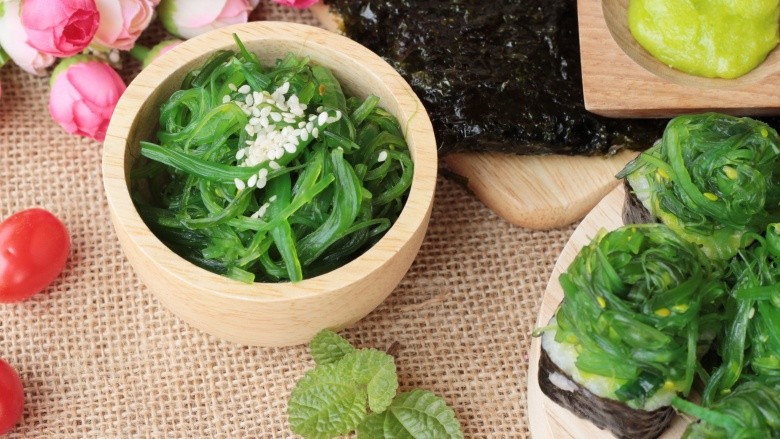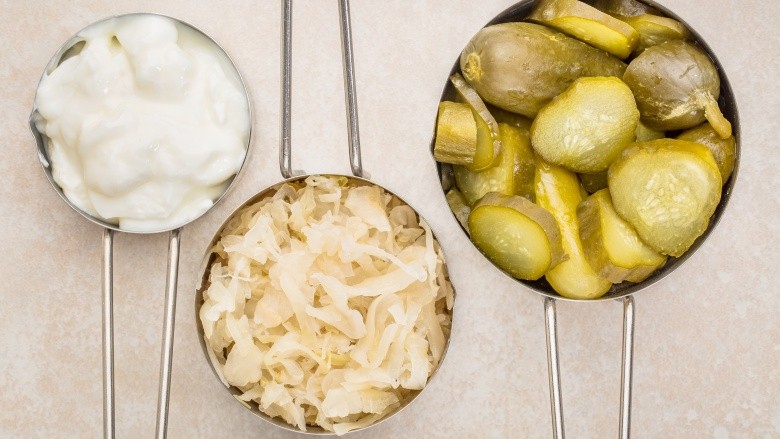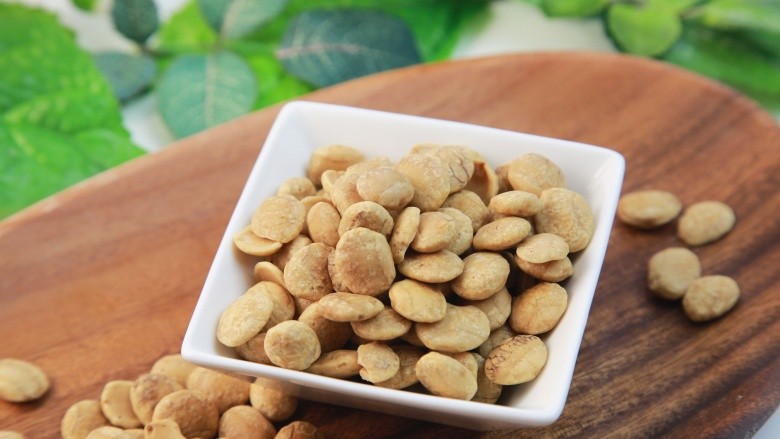11 Food Trends That Are Going To Be Huge In 2017
It seems strange that in a world consumed by technology, the overarching trend in the food industry is, essentially, "back to basics." While backyard chickens and homesteading may not directly enter the mainstream, their byproducts — free range eggs and farm-to-market produce — are flooding the marketplace. These changes are driven largely by consumers' focus on health. According to a December 2016 national survey from Pollock Communications and Today's Dietitian, a leading nutritional trade magazine, most people are turning away from traditional diets, opting instead for clean and mindful eating. As such, people are eating fewer processed foods, opting instead for fruits, veggies, ancient whole grains, plant-based proteins, and fermented foods. In fact, the survey's 2017 Top 10 Superfoods are seeds, avocado, nuts, fermented foods, ancient grains, kale, green tea, coconut products, exotic fruits and salmon.
Basically, people are trying to eat healthfully, and they're using a wide variety of tactics to do so, including meal delivery, weekly meal prep, and making conscientious purchases at the grocery store. In no particular order, these are the 10 big food trends you're bound to see a lot more of in 2017.
Bugs
Looking for something a little more adventurous in your alternative proteins? As gross as it sounds, bugs are the next big thing in protein according to the sustainable food-focused digital media and event production company, Our Name Is Farm. Yes, bugs. In a conversation I had with the company, they said, "Crickets and other bugs are making waves in smaller production, and very famous chefs, like Alex Atala at DOM in Brazil, have been cooking with products like ants for awhile."
Frankly, I'm not surprised bugs haven't infiltrated America's mainstream just yet, although Our Name Is Farm insists the tide is turning, "Eighty percent of the world population currently eats bugs, so it makes sense that Americans would follow suit. There is a perfect storm of a situation that will allow this food trend to break in the coming year — food prices (especially for sustainably-produced proteins) are at an all time high, and global warming is an ever-present topic of deliberation, so it makes sense that, as a country that consumes a lot of protein, we would find ways to do so that produce drastically less greenhouse gas emissions. All that's missing is public education about the product potentials, or a killer PR campaign. Either way, we're sure it's coming in 2017."
If you're dying to try the trend on your own, just head to EntoMarket, an edible insect marketplace. You'll never know if you'll like it until you've tried it.
Zero-waste cooking
Food waste is a big problem in America. According to Feeding America, an estimated 70 billion pounds of food goes to waste each year. That's a lot of food. And when all that food goes to waste, it becomes a significant source of methane the Feeding America website says is "a potent greenhouse gas with 21 times the global warming potential of carbon dioxide."
Rachel Begun, MS, RDN, nutrition communications and consulting expert, uses these astounding facts to highlight the true importance of the waste-reduction trend, "As much as 40 percent of food grown in the United States will never be consumed. This astonishing statistic is why preventing food waste is a trend we'll be hearing about until we start making real change in the way we use and prepare food. You'll hear about chefs getting creative with plant stems, skins, rinds and pulp, and food manufacturers featuring by-product ingredients like whey from yogurt and spent grains from beer — all in the effort to eek out as much from our food supply as we possibly can."
Because food waste is such a problem, government agencies are actually getting behind the movement. Ariane Daguin, the CEO and Co-Founder of D'Artagnan, the nation's leading gourmet food purveyor of organic, antibiotic-free meat, poultry and game, points out that the FDA and the USDA have established a joint goal to reduce food waste by 50 percent by the year 2030, which is feeding into a waste-nothing philosophy becoming popular with manufacturers. And as Begun so astutely pointed out, chefs are getting in on the game, too. "I anticipate a trend to reducing waste with 100 percent usage of vegetables — for example, carrot-top pesto," says David Felton, executive chef of Ninety Acres at Natirar in Somerset Hills, New Jersey.
But it's not just chefs and manufacturers that create waste. Chances are, you've been known to throw away tomatoes that have shriveled or lettuce that's turned slimy. You can embrace the waste-not philosophy at home by following some tips to reduce food waste from the Environmental Protection Agency.
Farm-to-table makes veggies the showcase
Darren Sylvin, the executive chef of Aloft Boston Seaport, shared in an email, "With the farm-to-table movement expanding, I expect this to be the year of the vegetable. Look for chefs to showcase them in new, creative ways, and even feature them as entrees. As the collective conscious toward healthy living increases, so will the food and the way we grow, source, and treat it."
Lucie Green's JWT Innovation Report backs this assertion, pointing to the "new vegan" wave that's turning veggies into the focal point of consumer taste preferences. The report states, "Amid a wave of interest in natural ingredients and transparency from food companies, even vegan cuisine is evolving beyond soy products to more natural and unprocessed alternatives." The report points specifically to jackfruit, a spiny-shelled Asian fruit closely related to the fig, as an example. This fruit has become an all-natural alternative to pork, showing up on barbecue and Mexican food menus.
Green emphasizes, though, that jackfruit isn't the only "new vegan" option, "Try coconut jerky, cauliflower nuggets, or any of the nut milks currently sweeping the country. As even vegan foodies seek more natural, unprocessed options, 'plant butchers' will finally have the chance to shine.
Grass-fed, humanely-sourced meat, fish, and eggs
While meat products, in and of themselves, may not be trending the way veggies are, the biggest shift in the meat industry is the drive for grass-fed, humanely-sourced meat products. After years of turning a blind eye to the questionable way animals are raised and treated in the mass-produced meat market, Americans are starting to consciously consider their choices when selecting beef, chicken, eggs, and pork, opting more often to purchase from farms and ranches that allow their animals to roam free and eat grass, without doping them up with antibiotics and hormones.
Robert Davidson, PhD, and Program Director at Logan University in St. Louis, is quick to point out that these practices aren't just better for animals, they're better for people, too, "Grass-fed animals have a different lipid composition than corn-fed animals, with grass-fed providing more health benefits to humans. Additionally, grass-fed animals tend to have a lot more omega-3 fatty acids. Consumption of higher levels of omega-3 fats (found in cold-water fish and grass-fed beef) instead of omega-6 fats (found in corn and corn-fed products) results in lowered activity levels of osteoclast cells in bone (resulting in less bone resorption, which can delay osteoporosis). For the same reason, it also helps growing kids reach peak bone mass earlier."
Not to mention, these products just taste better. The first time I tried grass-fed ground beef, I was sold. It's all I've purchased in the last four years, and even though it's more expensive, the price is worth it — it's better for me, I know the animals were treated well, and it tastes better, too.
Cooking with marijuana
As more states legalize the use of recreational marijuana, it seems only natural that chefs would start experimenting with weed in their recipes. Mya Zeronis, a chef and cookbook author based in Washington, DC, where marijuana is legal, says brick and mortar restaurants, as well as pop-up chefs like herself, will find ways to use cannabis in cooking in 2017. This sentiment is confirmed by Lucie Green's JWT Innovation report, and points to Whoopi Goldberg's entrance into the "ganjapreneur" market, offering a line of cannabis-infused edibles specifically for women to reduce menstrual cramps.
There's also a rise in "gourmet" edibles, such as dark chocolate bars and ice cream, catering to a female market in the hopes that these products can take over wine as the "hip indulgence of choice." Granted, recreational marijuana use is still only legal in eight states and Washington, DC, so it may be awhile before the trend catches on nationwide, but it's one you're sure to hear more about in the coming year.
New and different waters and water bars
Soda is out, and water is in. But not just tap water. No, consumers want fancy water, evidenced by the massive explosion in sales growth for La Croix sparkling water, which, according to Business Insider, has tripled since 2009 to $175 million. As people are trending away from sugary beverages, they still want drinks with some flavor and panache. Tory Tedrow, a registered dietitian and the head of nutrition for SugarChecked, an app that alerts users when hidden sugars are in their foods or drinks, predicts there will be a rise in different types of water, "Watermelon water has become more popular this year, thanks to Beyonce's involvement with WTRMLN WTR, the most well-known brand of watermelon water. Cactus water has also been increasingly talked about."
You can also expect to see more water-based libations popping up at your favorite drinking hole. Lucie Greene's JWT Innovation report names spiked seltzer as one of 2017's trends, stating "As consumers have come to seek natural, wholesome alternatives at every turn, the alcohol industry wants to be next in line to provide low-calorie, healthy options." Greene specifically notes this is interesting because, "Although arguably the least likely to be thought of as a 'healthy' sector, alcohol's foray into health-conscious branding shows just how thoroughly consumers have adopted the wellness lifestyle."
Algae and seaweed
You may not immediately think, "mmmm, delicious," when you hear "algae and seaweed," but registered dietitian nutritionist, Chelsea Elkin, who holds a Masters of Science in Nutrition Education from Columbia University, says, "I predict we will increasingly see algae used as a new culinary ingredient. Fortune was the first of many to name algae as the next superfood. Algae Oil, a new culinary oil on the market, has been touted as the best new oil for your heart. And algae is the next big protein alternative for food manufacturers, according to NPR and other top news sources, helping to make protein-rich, vegan, allergen-free food products available across the nation."
It's not just algae that's popping up in grocery stores and restaurants, seaweed is growing in popularity as well. According to Julieta Ballesteros, the Executive Chef for TAVO in New York City, "Kale is out, seaweed is in. Expect to see more seaweed used on menus as well as hidden in dishes. In fact, sea vegetables in general will be popular, especially in the health food industry, where kale may have had its day."
Fermented foods
The importance of gut health — maintaining an active and diverse colony of microbes in your intestines — has gained a lot of attention in the media as doctors point more frequently to the importance of these bacteria in immune function and health. Probiotic supplements that encourage a healthy gut have certainly gotten their fair share of attention, but as with the overarching 2017 trend of "back to basics," fermented foods, including kombucha, kefir, apple cider vinegar, and sauerkraut, are gaining in popularity. The process of food fermentation encourages natural probiotics to flourish, so when fermented foods are added to your diet, your gut enjoys a dose of friendly bacteria, no supplements required.
The James Beard Foundation, an organization focused on celebrating leaders in America's food culture, pointed to fermentation as one of their top predicted trends for 2017, stating, "The new magazine Cured will cover a large number of topics about aging and fermenting food, and cookbooks like Bar Tartine give explicit instructions about how to ferment your own condiments. Even the current directive to minimize food waste will likely play into the growing notion that older, bubbling, cultured, and fermented foods are better for your health, for flavor, and for the planet."
Food delivery of every kind
While eating out certainly won't stop any time soon, Americans understand one of the best ways to eat healthfully is to cook and consume meals at home. The challenge? No one likes to grocery shop, and coming up with menu plans and finding recipes is just one more to-do added to the giant list of to-dos that never seems to end. It should be no surprise, then, that meal kit delivery is gaining traction as a viable way for people to transition to more home-cooked fare, with services like Blue Apron, Plated, and Hello Fresh taking the lead in this brave new world of the home chef.
The concept is, frankly, genius, with pre-portioned ingredients for specific recipes delivered straight to the front door, along with recipe cards to walk you through the cooking process. My brother, an ER doctor married to a psychologist, along with their two little girls, swear by Blue Apron as a fun way to cook together as a family without the hassle of grocery shopping.
What's so great about this growing trend, is that it's now reaching beyond the basic meal kit delivery service into other areas. Take for instance, Butcher Box, which delivers 7-10 pounds of grass-fed beef, chicken, and pork products straight to your door in one-, two-, or three-month increments. The prices are similar to those you'd pay in-store for comparable products, but you don't have to go shopping, and they also send recipe cards suggesting ways you can cook up the meat.
Feastive is another exciting extension of meal kit delivery services, offering dinner party delivery. Rather than stressing and shopping when you host your next dinner party, you literally just select a menu, choose how many servings you need, and Feastive delivers everything to your door. All you have to do is open the box, cook the food, and share it with your party guests. Currently only available in New York, the service hopes to expand to other cities in the near future.
There's also the growth of online grocery stores, grocery delivery and pick-up services, such as Shipt and AmazonFresh. Essentially, people want to eat healthy food, they want to cook at home, but they don't want the hassle of planning and shopping. Food delivery will continue to grow in 2017 to meet these consumer demands.
Super seeds
Nuts and seeds are another great source of plant-based protein, healthy fats, and vitamins and minerals, so it should come as no surprise that nuts and seeds continue to grow in popularity.
Chia and flax have already gained nationwide attention, with sales still on the rise, but the lesser-known seeds, including hemp and sacha inchi, are bound to pick up steam. Misty Lister, a rep for Imlak'esh Organics says, "Sacha inchi contains the earth's highest source of plant-based omega-3s (more omegas than salmon) and boasts an impressive nutritional profile, with 8.5 grams of protein and five grams of fiber in each serving."
Likewise, according to Michigan State University Extension, hemp seeds offer a complete source of plant-based protein (meaning it delivers all the essential amino acids your body can't make on its own), and a single one-tablespoon serving has three grams of protein, four grams of fat, and one gram of carbs. While it's still illegal to grow hemp in much of America (the plant is related to marijuana, and even though it contains lower concentration of THC, there are strict regulations regarding it's use and cultivation), Canada doesn't have the same restrictions, and you can often find Canadian-imported hemp hearts in the health food section at the grocery store. Expect to see more hemp availability as American legislation changes (the tides started turning in 2014), and homegrown products are allowed to hit the market.
Alternative proteins
The rise of CrossFit and the Paleo Diet have fed into a groundswell of quietly growing chants for, "protein, protein, protein." Don't get me wrong, as an exercise physiologist with a master's degree in exercise science, you won't hear me dissing the benefits of protein. Protein is an essential macronutrient that plays a key role in cellular function and muscle protein synthesis. But frankly, I'm unconvinced that we really need to be drinking protein water or consuming protein-laced coffee. Most Americans already consume enough protein in their daily lives, so adding protein to everything seems like more of a marketing tool than an actual need. That said, there's a difference between adding protein to everything and seeking out alternative sources of protein — you know, things other than chicken, beef, and pork.
Rachel Begun, MS, RDN, nutrition communications and consulting expert, says this shift away from all-things-meat can be a good thing, "We love our protein for all its health, satiety and weight management benefits, but harvesting animal protein is energy- and resource-intensive. Food innovators are putting lots of research and development into making tasty products that feature these more sustainable protein sources."
According to Lucie Greene, Director of J Walter Thompson's (JWT) Innovation Group, and the author of its annual "Future 100" report, alternative proteins you're likely to hear about in 2017 include plant-based options like algae, pea, duckweed, and shiitake mushrooms. Pea protein is already fairly popular, as Greene points out, "The Beyond Burger, the much-hyped burger alternative that even bleeds like real meat, is made from pea protein isolates. It's available in the meat section at Whole Foods Market." And while Duckweed and shiitake mushroom protein products haven't gained as much traction, new options are expected to hit the market this year.
